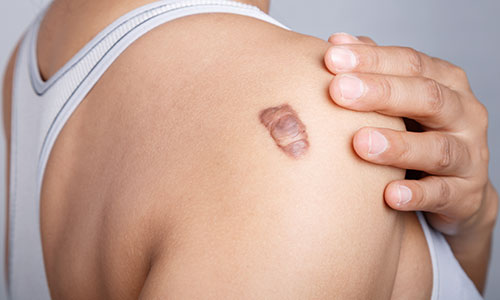Options for treating scars
- Overview
- Full article
- Related articles
I know what it’s like to live with scars and I know what it’s like to be told, “there’s nothing we can do”.
I’ve looked for answers all over the world for the last 20 years and I’ve learned that there is hope for people living with this condition. Scars are notoriously difficult to treat and one size doesn’t fit all. There are many different types of scars and scars change with time. All of these factors mean that the treatment must be tailored to the problem.
It’s because of that complexity that we set up The Scar Team at Nuffield Health Bristol Hospital and why I lead the scientific team at Restore, a charity committed to advancing burn and scar research.
What can be done for scars?
No one should ever promise to make your scar go away. There are over 100 different treatments out there but such a range of options usually indicates that no one treatment is wholly effective. Scars may require different treatments depending on their maturity.
Clinical treatments
Only a minority of patients opt for surgery and there about 30 treatments available. Some types of scars, such as keloids, can worsen with surgery. But techniques are improving all the time. We’re one of the first teams in the UK to offer a cutting-edge technology that freezes keloid scars from the inside. The results are very promising with improvements in itch, texture and size of scars. Moreover, the effects seem to last with one or two treatments.
Pressure garments
For many hypertrophic scars – red, raised and itchy - pressure garments and silicone sheeting work well to lock in the right amount of moisture and reduce the number of cells which lay down scar tissue. But efforts are now being made to lessen the appearance not just of scars, but of the garments themselves, making them more fashionable and acceptable. Keloids on the ears can have a very negative cosmetic and emotional impact – but now we’re using specially designed pressure clip earrings that look like jewellery and treat the scar at the same time.
Make-up and prostheses
For depigmented scars, there are a wealth of specialist make-up options, but there is a relatively unknown invention that came out of the special effects industry. It works for scars that are atrophic (sunk below skin level) and uses colour-matched silicone putty to make prostheses that blend into the surrounding skin.
The Australians have taken spray tan technology to develop a similar plasticised spray-on home kit that is matched to your skin tone. It’s water-resistant and stays on even with high activity, such as playing sport.
Learning to live with them

From my own experience, I understand how important it is to learn how to live with scars. This is not just for the person afflicted by them, but also to change how society interacts with that individual. The work we do has a strong focus on raising awareness of scars and de-stigmatising them, so they get a little easier to live with.
The team I’ve put together takes the emotional side of scarring very seriously and we have a dedicated psychologist, Becky Watkins, who works with patients to help them through the sometimes very difficult journey.
Learn more about the Scar Team at Nuffield Health, The Chesterfield Hospital in Bristol.
The treatments explored in this article may not be suitable for your condition. Seek advice from a medical professional before purchasing products or treatments from the internet.
Last updated Wednesday 27 November 2019
First published on Friday 4 November 2016


